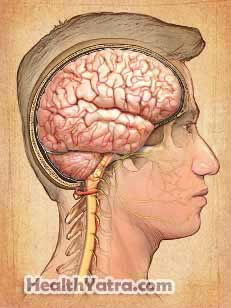Definition
Addiction is marked by an out-of-control need and craving that affects relationships and social obligations, such as work and school. Prescription medications are drugs given to treat a certain condition. Prescription drug addiction is the compulsive seeking and overuse of prescription medications despite harmful consequences. Some medications have a higher risk of addiction. Even with proper use they are associated with alterations in the pathways in the brain. These pathways influence sense of reward and well-being which can influence addiction.
Medication abuse is inappropriate use of medicine. It may include taking higher dose than recommended, snorting pills, mixing with other drugs and alcohol or using medication for wrong reason (such as using pain medication for sleep). Medication (drug) abuse may only develop because of addiction or the addiction may develop after abuse of a medication.
There are certain prescription drugs that are commonly abused because they are more likely to prompt addiction. These drugs include:
- Opioids—used to treat pain, medication examples include
- morphine
- codeine
- oxycodone
- Central nervous system depressants—used to treat anxiety and sleep disorders, medication examples include
- barbiturates
- benzodiazepines
- Stimulants—used to treat narcolepsy and attention deficit hyperactivity disorder, medication examples include
- dextroamphetamine
- methylphenidate
Causes
The reasons people become addicted to prescription drugs are largely unknown. It is most likely due to a combination of factors. The following may play a role in prescription medication addiction:
- Genetic factors
- Altered pathways in brain caused by addicting medications
- Peer pressure and personality traits

Risk Factors
Risk factors for prescription addiction include:
- Being under 30 years old (risk of addiction decreases as age increases)
- Being a man
- Improper use of medication (abuse)
- Family history of drug addiction
- Having anxiety, depression, loneliness, and a history of alcoholism
Physical dependence may contribute to the development and continuance of addiction. Physical dependence is when your body needs a drug to function normally. Withdrawal symptoms when the medicine is stopped or reduced can be a sign of physical dependence. Withdrawal symptoms can be intense and include nausea, vomiting, and sweating. It can make cessation of drug use difficult. Physical dependence may occur with abuse or with long term proper use of medications.
Symptoms
The symptoms below are associated with prescription drug addiction. If you experience any one of them, see your doctor.
- Rapid increase in the amount of medication needed
- Moving from one doctor to another for additional prescriptions
- Craving the medication
- Inability to stop or limit medication use
- Using significant effort to acquire the medication
- Medication use that interferes with activities
- Compulsive use of the medication despite adverse effects
Let your doctor know if you are having symptoms of physical dependence.
Diagnosis
Addiction can be difficult to diagnose. Prescription medication addiction can start with someone who needs frequent medications for a long-term condition like chronic pain. This can make it difficult to distinguish the difference between addiction and medical need.
Your doctor will ask about your symptoms and medical history. A physical exam may be done. Your doctor will ask specific questions about your prescription medication use and may review your refill history.
Treatment
Talk with your doctor about the best treatment plan for you. Addictions can be treated effectively through detoxification and counseling. Treatment will depend on the type of drug you use and your specific needs.
Treatment options include the following:
Detoxification
This involves managing the symptoms of withdrawal while the medication leaves your system. Some symptoms of withdrawal can be life-threatening. Your medical team will slowly taper you off the drug and monitor your bodies reactions.
Other medications may be used to counteract the effects of addiction and withdrawal symptoms. This should be done under the supervision of a doctor in a hospital or other outpatient setting to ensure your safety and effective detoxification.
Detoxification is done to address physical symptoms. It is important to follow-up with other therapies to avoid relapse.
Behavioral Therapies
Behavioral therapies can help. This therapy will help you learn to function without the medication, handle cravings, and avoid situations in which relapse is likely. Behavioral therapy may include individual, group, or family counseling.
Medication
Certain medications can be used to treat opiate dependence that may be present with addiction. They may be used during detoxification to reduce withdrawal symptoms. They may also be continued through maintenance to decrease craving and reduce the risk of relapse. They are given as a part of an overall treatment approach including counseling. Common medication options include:
- Methadone
- Buprenorphine
- Naltrexone
The choice of medication will depend on drugs involved in addiction, your medical history, and recovery commitment.Other medications may be needed to treat underlying issues, such as depression or anxiety. These medications may help you on your way to a full and productive life as well as prevent relapse.
Prevention
To reduce your chance of developing a prescription drug addiction, take the following steps:
- Carefully follow directions.
- Be aware of potential interactions with other drugs.
- Talk with your doctor before changing the dose.
- Never use another person’s prescription.
- Tell your doctor all the medicines you are taking. This includes over-the-counter medicines and dietary and herbal supplements.
- A good relationship with your children may reduce their risk of using drugs.
